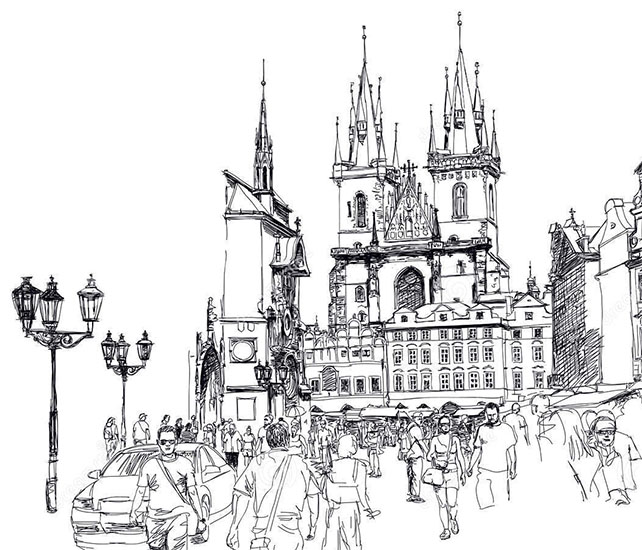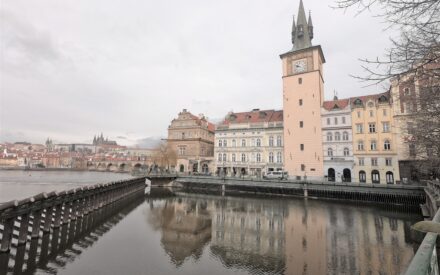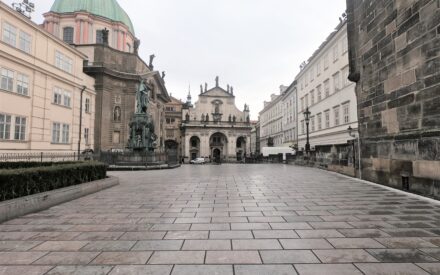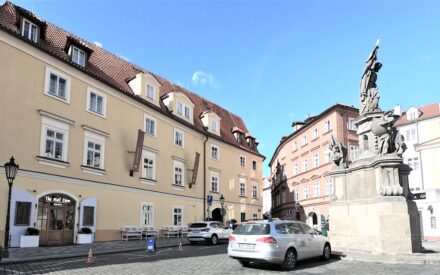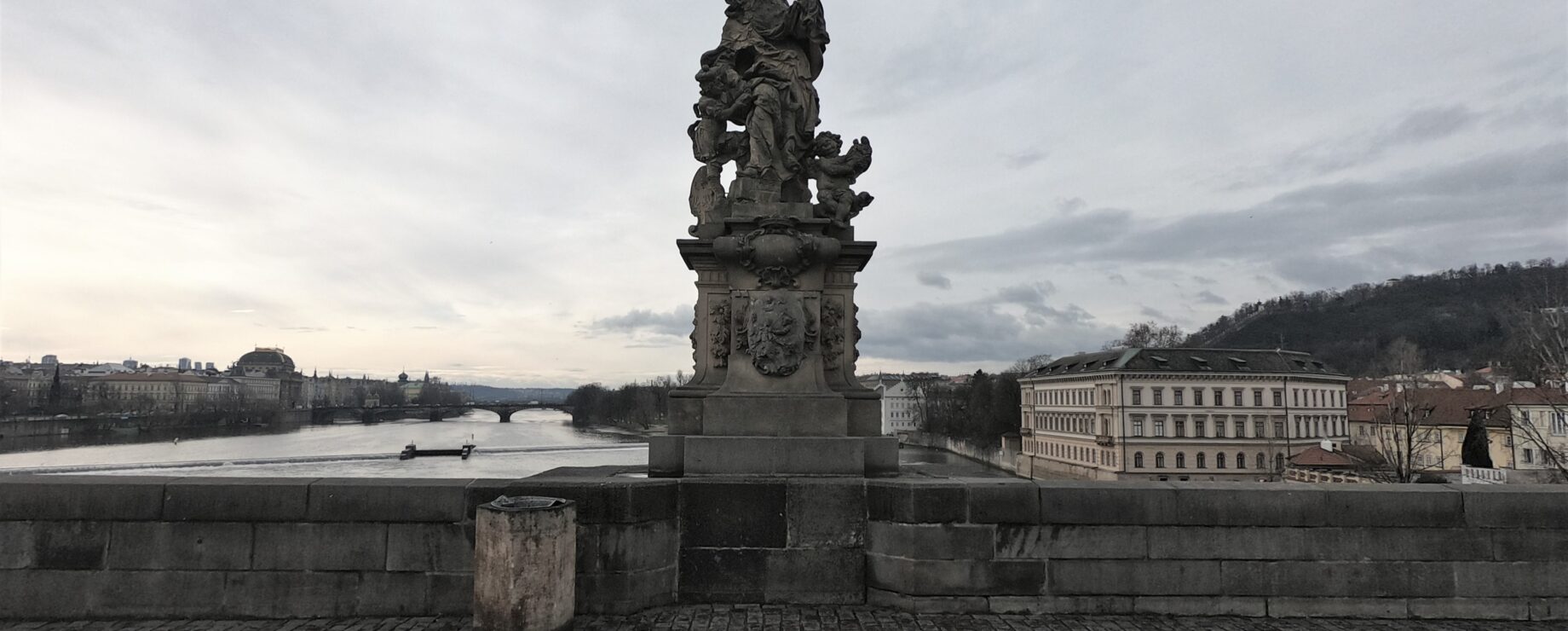
Statue of St. Ludmila on Charles Bridge
The author of this statue is Matyáš Braun (it was completed in 1730). It was subsequently placed on Charles Bridge in 1784. It represents the grandmother of the Czech patron saint, Saint Wenceslas, who was canonised in 1729. For The Description of a Struggle (Beschreibung eines Kampfes) this statue forms an important watershed. As soon as both main protagonists have passed this sculpture, the narrative loses its prevailing realistic character and becomes a dreamlike impression which was so typical of Prague‘s literati. We can find a similar way of narration in Neruda’s story What did the Moon Say from Arabeskyfor instance, in which the narrator comes to Charles Bridge for nine nights, in order to allow the moon to tell of what he saw and experienced when he was sailing over Prague. In a similar fashion Kafka’s narrator also appeals to the moon:
I spread my arms in joy so that I could savour the moon fully. And I felt a lightness as my weary hands began to move as if they were swimming and I pushed forward without pain or effort. Why did I not try this before! My head rested in the cold air and just then my right knee swam best, I praised it by tapping it. And I remembered that once upon a time I could not even stand one of my acquaintances who was probably still striding around below me, and I was thrilled by the fact that my memory is so good that it retains things like that. But I did not need to think too much, I had to swim on, if I did not want to fall too deep. And so nobody could tell me later that everybody could swim on the cobblestones, that it was not worth talking about, I raised myself above the railings with one single stroke and swam swirling around each of the statues of saints that I happened upon.
At the fifth one – I just managed with barely noticeable strokes to keep myself next to the pavement – my acquaintance grabbed me by the arm. I stood again on the cobblestones and felt the pain in my knee.
“Always,” said my acquaintance, holding me with one hand and pointing out the statue of Saint Ludmila with the other, “I always admired the hands of that angel on the left. Look how delicate they are! Really angelic hands! Have you ever seen anything like that before? Not you, but I have, because I kissed hands this evening – ”
Now, however, a third option has occurred to me as to how I might perish. I did not need to allow myself to be stabbed, I did not need to run away, I just had to jump in the air. Let him go to his Petřín, I will not interfere with him, I will not even disturb him with my escape.
It is no coincidence that the narrator found solid ground under his feet by the fifth statue. On 4th September 1890 a flood had severely damaged Charles Bridge, two pillars suffering damage and some statues fell into the water. Although Charles Bridge was repaired in 1892, the place occupied by the statues remained vacant. The statues were only returned to their place in 1913, i.e. several years after Kafka’s stories were completed. Therefore, it may be assumed that, when Kafka wrote his text, the gap between statues gaped at him, precisely in the very place where they once stood.
And I screamed out: “So get on with these yarns! I don‘t want to listen to any petty tittle-tattle. Tell me everything from start to finish. I won’t listen to anything less, I tell you. I am obsessed with the piece as a whole.” As he looked at me I stopped shouting so much. “And you can bet the rent that I won’t utter a word to anyone! Tell me everything you know. You have never had such a discreet listener as I am.”
And very quietly I said into his ear: “And you need have no fear in front of me, that would be really pointless.” I then managed to hear how he chuckled.
I said: “Yes, yes. I believe it. I have no doubt,” and at the same time I pinched his calves, as long as he left my fingers free. But he did not feel anything. Then I said to myself: “Why do you go with that person? You feel neither love nor hatred for him, because his good fortune rests on just one girl and yet it is not even certain whether she is wearing a white dress. So, this person is quite indifferent to you – repeat it – indifferent. He is harmless though, as it eventually turned out. Go with him to Petřín after all, since you have gone out into that beautiful night, but let him talk and enjoy yourself in your own way, like that – and say it quietly – you will be best protected.”
This guided walk is a part of the “Democracy on the Brink. Historical lessons from the late 1930s” project supported by the Europe for Citizens programme of the European Union.
Další místa na téma "A literary walk through Kafka’s Prague on the trail of his story Description of a Struggle"
